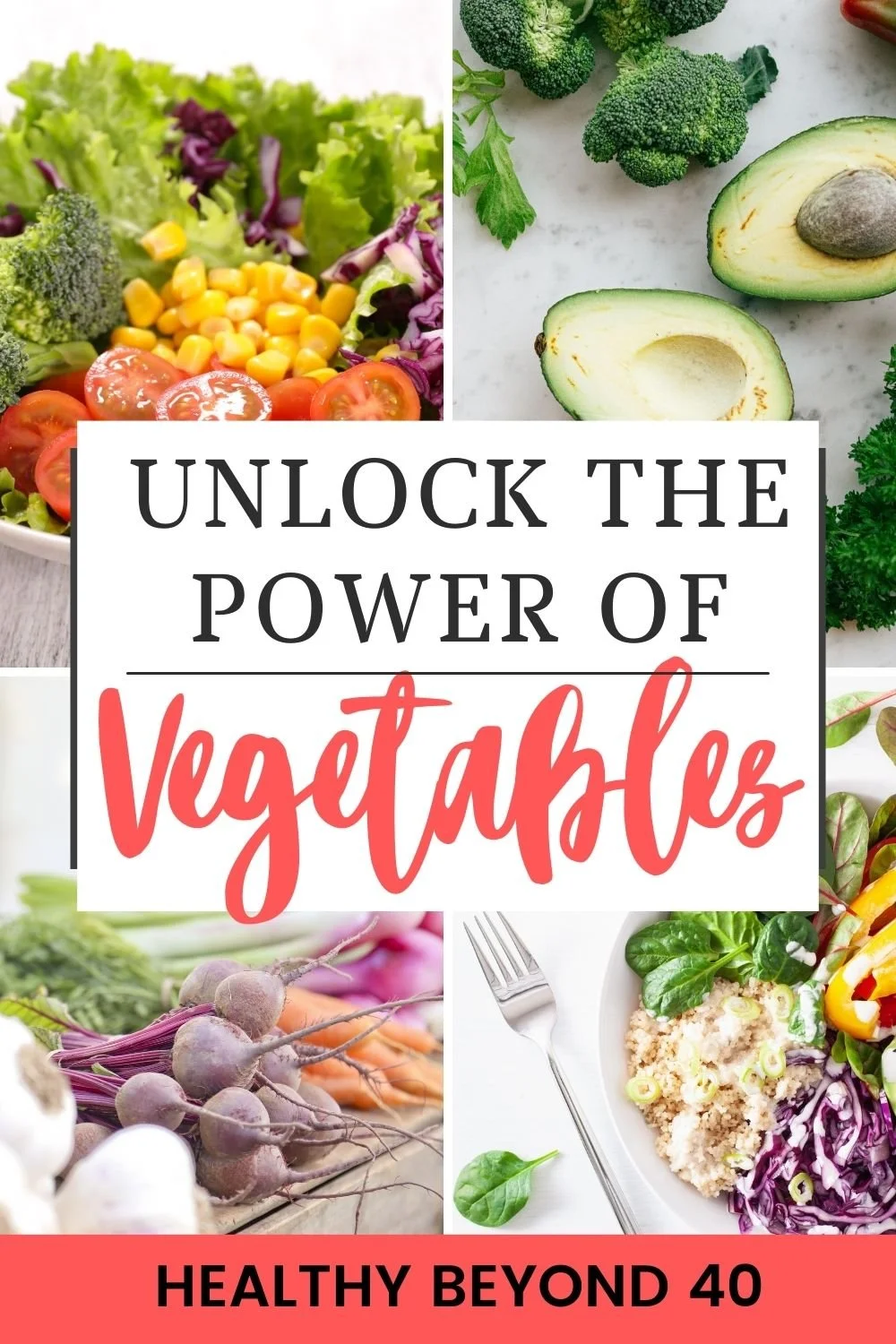What Is a Serving of Vegetables and How Many to Eat in a Day
Curious about what counts as a serving of vegetables? And want to know how many servings of vegetables you should get a day?
In this episode, I break down:
What is a serving of raw vegetables, cooked veggies, and leafy greens
How many servings of veggies you should get per day
Starchy versus non-starchy veggies
When it comes to maintaining a healthy lifestyle, there is one golden rule that both nutritionists and doctors agree upon – consuming plenty of vegetables. But how many vegetables should you really be eating in a day? Is there a magic number, and what constitutes a serving of vegetables? In this episode of Healthy Beyond 40, we delve into these questions and provide you with practical tips on incorporating more veggies into your daily diet
What Is a Serving of Vegetables?
First, let's break down what exactly constitutes a serving of vegetables. According to the USDA, a serving size of vegetables is typically measured as one cup of raw vegetables. This could include vegetables like carrots, bell peppers, cucumbers, and celery.
When vegetables are cooked, it's important to consider that their size tends to shrink, and some water is lost in the process. As a general guideline, you can count approximately 1/2 cup of cooked vegetables as one serving. This estimation helps ensure you get the right nutritional value from your cooked veggies.
Now, when it comes to leafy greens, like lettuce, the serving size is slightly different. To count as one serving of vegetables, you should aim for approximately 2 cups of lettuce. This ensures you're getting the appropriate nutrient intake and maximizing the benefits of these nutritious greens.
However, it's important to note that different vegetables have varying nutritional contents, so it's crucial to diversify and incorporate a variety of vegetables into your meals.
Nonetheless, there’s no one-size-fits-all answer to how many servings of vegetables you should consume daily.
How Many Servings of Vegetables to Eat per Day?
Rather than simply sticking to a specific number, it's important to listen to your body's needs. Start by assessing your current vegetable consumption – do you eat only 0 or 1 non-starchy vegetable serving per day? If so, you can gradually increase your intake. Begin by setting a goal to have one non-starchy vegetable daily for a week. Once you've successfully achieved this, gradually increase it to two or more servings.
The American Heart Association suggests consuming 4 to 5 servings of non-starchy vegetables per day, excluding fruit. This quantity may seem daunting at first, but it's attainable when you realize how versatile and delicious vegetables can be. Plus, there is no limit to the number of vegetables you can consume, so feel free to enjoy as many as you like throughout the day.
The Benefits of Eating More Vegetables
Beyond the recommended servings, there are numerous reasons why vegetables should take center stage in your diet. For starters, non-starchy vegetables are lower in calories and carbohydrates compared to starchy vegetables, making them an excellent choice for those aiming to lose weight or manage their blood sugar levels. Additionally, vegetables are rich in essential vitamins, minerals, and antioxidants that promote overall health and protect against chronic diseases.
Eating an ample amount of fiber is crucial for fueling your body, improving digestion, and maintaining a healthy gut microbiome. With vegetables being an excellent source of dietary fiber, they feed the good bacteria in your gut and help support a thriving microbiome. Incorporating fiber-rich foods like vegetables into your meals can also aid in weight management, as it keeps you feeling fuller for longer.
When selecting vegetables, focus on non-starchy varieties, and exclude starchy vegetables like potatoes and corn. These starchy options act more like carbohydrates in your body, so it's recommended to consume them in moderation. Leafy greens such as lettuce and spinach are excellent choices and can be used as a base for salads or incorporated into wraps and smoothies.
Get help eating more veggies
In this episode of Healthy Beyond 40, we've explored the world of vegetables, serving sizes, and daily intakes. Remember that the government guidelines are simply a starting point and that it's up to you to gauge your body's requirements.
Also remember that there are other ways to treat yourself without sugar. If you need some ideas check out 30 non food rewards for weight loss.
Let vegetables be the foundation of your diet, prioritizing non-starchy options, while enjoying the bounty of varieties available. If you struggle with incorporating vegetables, seek support, and accountability. Consider setting up a free health coaching call to address any challenges you may face.
Making health changes can be difficult, but with proper guidance and support, it is possible to transform your relationship with vegetables and create lasting, sustainable habits for a healthier, happier you. Remember, by prioritizing vegetables and consuming them in adequate amounts, you're taking a proactive step towards enhancing your overall well-being and unlocking the powerful benefits that vegetables have to offer.
Mentioned in the episode:
👉Schedule a free health coaching call and get unstuck and clear on what you need to do to be healthier: https://tidycal.com/micheleriechman/free-coaching-call
👉 Share your veggies! Join my private FREE Facebook group here: https://www.facebook.com/groups/micheleleefitness
Favorite green juice:
👉 Save 20% on Organifi with the affiliate code HEALTHY20 and 35% when you set up a subscription. My favorites are the green juice in AM & gold in the PM
https://www.kbxdj3trk.com/healthy20/
👉 My favorite fish oil & omega test: Finding the perfect balance of omegas is key for healthy cells and reducing inflammation. Learn how to find out your ratio and check out my favorite supplement!
https://www.micheleriechman.com/fish-oil
👉Grab my 5 favorite smoothie recipes so you can start having one healthy, super nutritious meal a day! These are designed to balance your blood sugar and optimize your metabolism.
https://programs.micheleriechman.com/f/5-smoothie-recipes-for-weight-loss
Work with me:
👉 Discover more about the Wellness Breakthrough Program for women over 40 who are looking to lose weight for good & get in shape: https://www.micheleriechman.com/wellnessbreakthrough
You got this,
Coach Michele
Disclaimer: This podcast and website represent the opinions of Michele Riechman and her guests. The content here should not be taken as medical advice. The content here is for informational purposes only. Please consult your healthcare professional for any medical questions or advice.
*Affiliate links are mentioned that I do make a commission from.



